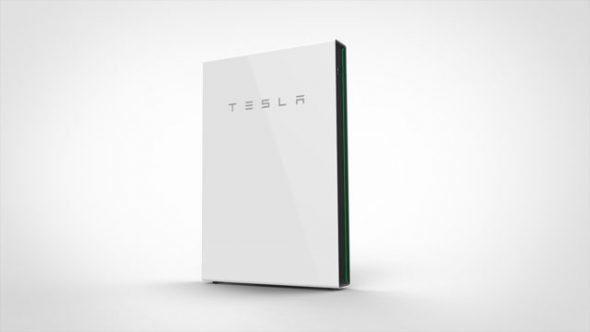Cue..."the writing on the wall!"
Telsa's NEW Lithium Powerwall is a game changer.
Tony Seba continues to be 100% correct...actually in this case he under estimated the market...and everyone thought he was way too bullish!
No one understands!
No one's got it!
No one can see how dramatically different the world will be in NOT 15 years or 10 years. BUT in 3-5! It's NOW. (thanks to lithium and the other metals that go into a Li battery.)
You can buy a Powerwall 2.0 & solar now! It's now the same cost as your get from a utility.
What MUST the competition do? Match it...better it? LG...ABB...BYD...plus the other 50+
Then more people buy Solar with Lithium storage. Then the price comes down even more.
Telsa's powerwall 3.0 (after the Gigafatory starts up?) in 12 months with solar titles? I afraid to guess how cheap it will be.
Musk is right...we WILL need utilities alright. Someones has to delivery all the excess power from these houses back to the grid.
I do feel for Hackett and Redflow. He's just too slow and Lithium is just too good.
Next time you are driving around...look at the roofs of houses.
There's over a million solar panel installs in Oz. The U.S STILL has less then 1% penetration. Then there's the rest of the world. Good lord!
We are going to have a dramatic Lithium shortage the next 3-5 years. The market JUST hasn't figured it out yet!
http://reneweconomy.com.au/teslas-p...ail&utm_term=0_46a1943223-7beef08bbf-40378893
Tesla’s price shock: Solar + battery as cheap as grid power
By
Bruce Mountain on 4 November 2016

Last week, T
esla launched their Powerwall 2.0 residential battery storage system, a little less than a year after Powerwall 1.0.
Compared to Powerwall 1.0, peak power has
increased by 40 per cent, continuous power by 50 per cent, storage capacity by 100 per cent (to 14 kWh) and an inverter is included. And all this for US$5,500 ($A8,800) – about the same price as Powerwall 1.0.
In other words, the price per kWh stored and re-used has halved in less than a year. Indicative installed prices in Australia are a little over $10,000. The commonly accepted wisdom was that battery costs would decline more gradually than the precipitate decline seen in solar PV costs. This has been proved wrong.
Let’s do a solar PV+battery+grid versus grid-only price comparison.
First, let’s assume a 4,800kWh per year household in Adelaide and that its electricity bill is either the average of all 77 market offers after all conditional discounts, or the average of all 77 Market Offers before all conditional discounts, from the 16 retailers operating in Adelaide (data from
MarkIntell).
For solar PV, let’s take the median installed price of a 5kW system (data from Solar Choice) and let’s assume a 20 year life with zero residual and 20% purchase premium for on-going maintenance. For battery, let’s take the indicative installed price ($A10,300) and assume a 10 year life with zero residual.
Let’s also assume an operating regime that sets the daily household consumption against solar PV production and battery storage as far as possible. This results in 8,373 kWh per year solar production, 200kWh of grid purchases and 3,773kWh per year of solar PV export to the grid.
Putting this together and annuitising the capital items at 2 per cent real (the typical mortgage rate), we get the result shown in the chart below: PV+battery+grid is level-pegging with the average grid-only Market Offer (after conditional discounts) and cheaper than the average grid-only Market Offer (before conditional discounts).
 This is astounding.
This is astounding.
A typical household in the suburbs of Adelaide can now meet its electrical needs with solar and battery storage for about the same amount they would pay on a competitive offer from the grid.
And no need to worry about black outs or bill shock: for an outlay of around $16k and assuming a suitable roof, consumers will be able to reduce their grid bill to almost nothing (revenue from surplus PV exports paying for the grid fixed charge plus the little energy bought from the grid to cover rainy days). And the set-up more than pays its way.
Of course one can argue with any of the assumptions I have made, but they seem plausible to me and the calculation itself is not tricky.
Electricity in Australia is deeply interesting at the moment. Of all the fascinating issues competing for attention, this tops my list.
It has obviously profound implications for consumers, PV and battery producers and installers, electricity retailers, centrally dispatched generators, network service providers, market operators, regulators and governments
The strategic and commercial implications are marvellous or frightening, depending on your vested interest. It’s worthwhile studying this carefully.
Bruce Mountain is the Director of CME and co-founder of MarkIntell. (20min delay)
(20min delay)




